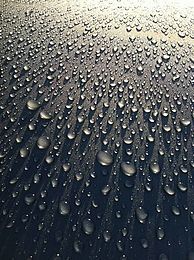发动机原理及详解之一
2019-12-11 20:57:14 菏泽汽车网
发动机原理及详解之一
A reciprocating engine consists of (1) compression of air or pre-compressed air (or air-fuel mixture in the case of certain types of engines) within the cylinder of the engine by the action of a piston, (2) addition of heat energy into the compressed air by directly combusting the fuel in the compressed air, followed by (3) expansion of the hot pressurized combustion products in the cylinder against the piston connected to the load to produce useful work. The auto engine and the diesel engine are examples of a reciprocating engine. The compression ratio of an auto engine is lower and the combustion process is initiated by a spark plug while in a diesel engine, the compression ratio is significantly higher and the fuel is ignited by the heat of compression.
Spark Ignition Engines. Next, there are two types of spark ignition engines: the four stroke cycle and the two stroke cycle. In the four stroke engine, four strokes of the piston are required to complete a cycle: (1) intake stroke where the piston moves with the intake valve open and the exhaust valve closed such that a mixture of air with atomized and vaporized fuel is taken into the cylinder, (2) compression stroke, in which the air/fuel mixture is compressed with both valves closed followed by ignition of the air/ fuel charge by a timed spark, (3) power or expansion stroke with both valves closed, and finally (4) the exhaust stroke in which the pistons moves with the exhaust valve open and thus completing the cycle. The cylinder walls are cooled by circulating a cooling medium through the cylinder jackets or by incorporating fins cooled by air.
In the two stroke engine, the intake and exhaust strokes are eliminated by using pre-compressed intake charge to displace the exhaust gases. The two stroke engine has the advantage of a high power to weight ratio because the engine has a power stroke each revolution. This advantage, however, is offset by the loss of a portion of the intake charge with the exhaust gases, resulting in lower efficiencies. The two stroke engine has thus limited applications such as in small boat engines, lawnmower engines where low cost and weight are more important than efficiency.
Compression Ignition Engines. With a sufficiently high compression ratio and a suitable fuel, autoignition occurs in a reciprocating engine

【中文注解】
往复式发动机由以下几部分组成(1)由于活塞运动,气缸内生产的压缩空气或预压缩的空气(或者因某些发动机类型不一样,也可能是空气燃油混合物);(2)在气缸内的压缩空气中直接燃烧燃油,增加压缩空气所带的热能,然后(3)气缸中的高温高压混和气体推动活塞连杆做有用功,汽车发动机及柴油发动机全是这种发动机的代表。汽油发动机的压缩比要低一些,而气体燃烧是靠火花塞点火实现的,而柴油发动机的压缩比显然要高得多,它是靠压缩生热而燃烧的。
点燃式发动机
点燃式发动机可以分为两种类型,一种是四冲程发动机,另一种是两冲程发动机。对于四冲程发动机,一个循环包括四个步骤:(1)进气冲程(2)压缩冲程;(3)燃烧膨胀冲程;(4)排气冲程。
两冲程发动机内,进气冲程与排气冲程都省略了,因为进入气缸的预压混和气体将要排出的废气取代,它拥有较高动力重量比,因为每圈发动机都会产生做一次膨胀冲程,而这个优势是以一部分燃气进入气缸时随尾气排出被浪费了造成的,因此它的效率很低,用途极为有限。
压燃式发动机
这种发动机与点燃式发动机相似,但是在压缩冲程中,仅有空气进入并被压缩达到燃烧条件,然后气雾化了的燃油按控制的速率喷入燃烧室。
【延伸阅读】
* 汽车的心脏发动机
* 发动机原理及详解之一
* 发动机原理及详解之二
* 发动机原理及详解之三
* 发动机原理及详解之四
本文版权为汽车所有,欢迎转载!请务必注明出处(汽车)及作者。
丁桂薏芽健脾凝胶用量丁桂薏芽健脾凝胶怎么吃
宝宝积食食疗方法
- 上一篇:福特与宾利总设计师撕逼林肯新旗舰车被指抄
- 下一篇:汽车强制保险多少钱






